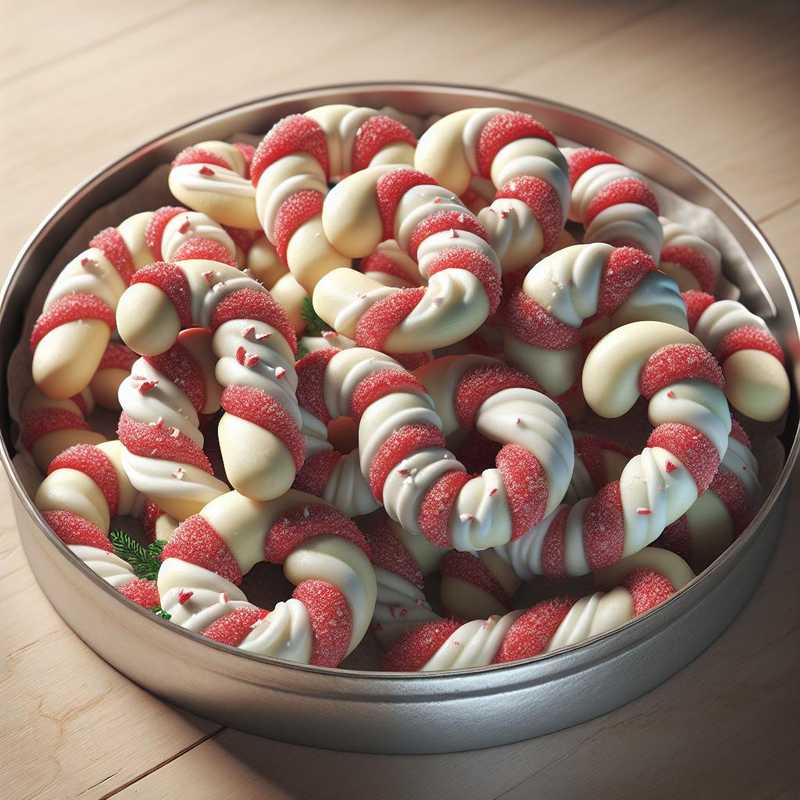Candy Cane Twist Cookies
17/11/2023The Candy Cane Twist Cookies are stick-shaped treats inspired by the classic Christmas candy cane. They are not traditionally Italian, but I can provide you with the basic recipe and perhaps suggest a small Italian variation, for example, adding a touch of almond flavor. Here is the recipe to make them:
Ingredients
- 225 g of butter at room temperature
- 120 g of powdered sugar
- 1 teaspoon of vanilla extract (for the Italian variation you could use almond flavor)
- 1 teaspoon of peppermint extract (optional)
- 1 egg
- 375 g of “00” flour
- 1/2 teaspoon of salt
- Red food coloring (as needed)
- Coarse sugar or powdered sugar for decoration
Preparation
- In a large bowl, cream the butter with the powdered sugar until the mixture is soft and light.
- Add the vanilla (or almond) extract and the peppermint extract (if you decide to use it) and blend well. Incorporate the egg, mixing until it is completely absorbed.
- In a separate bowl, mix the flour with salt, then gradually add it to the butter mixture, continuing to mix until a homogeneous dough is formed.
- Divide the dough into two equal portions. In the first part of the dough, add a few drops of red food coloring and knead until a uniform color is achieved.
- Take two pieces of dough, one white and one red, and form each into a long rope. Twist the two ropes together, shaping them into a candy cane. Cut to about 15 cm in length for each cookie.
- Place the cookies on a baking sheet lined with parchment paper, leaving some space between each one.
- Bake in a preheated oven at 180 °C for about 10-12 minutes, or until the edges start to slightly brown.
- Once removed from the oven, let them cool on the baking sheet for a couple of minutes, then transfer them to a wire rack to cool completely.
- If you prefer, you can roll the still-warm cookies in coarse sugar or simply dust them with powdered sugar once cooled.
Curiosity
The Candy Cane, or sugar stick, is a sweet typical of the Christmas period in English-speaking countries, and its shape is reminiscent of the shepherds’ staff. Tradition has it that it was created in 1670 by a choir master in Germany to keep children quiet during Christmas Mass.
If you want to pair a wine with these festive cookies, you could opt for a sweet passito or a Moscato d’Asti, which with their sweetness and aromatic notes go well with the sweetness and vanilla (or almond) of these cookies.
